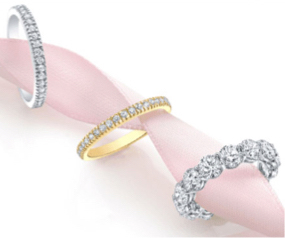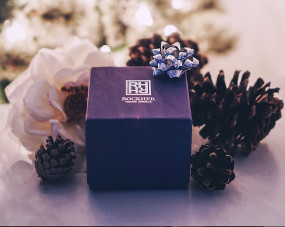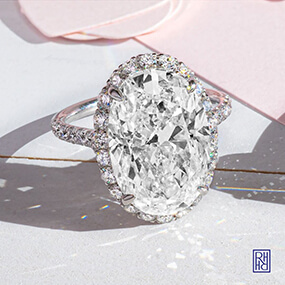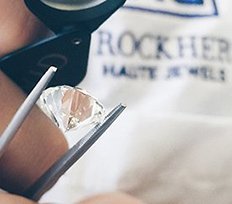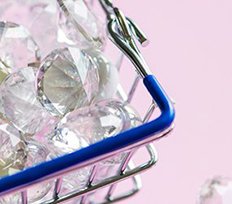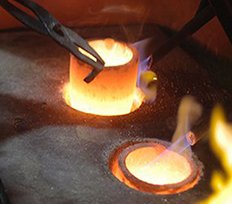Inside every diamond are microscopic time capsules: crystals from the deep earth, tiny cleavages from the pressure, and atoms trapped with the diamond when it formed billions of years ago.
Tiny crystals and other features enclosed in the diamond when it formed are called inclusions. Surface features that remain on the outside of the gem after polishing are called blemishes. Together, these two kinds of characteristics form a diamond’s fingerprint, evidence of where it was formed and its journey to the surface.
They also are the basis of its clarity grade. The Gemological Institute of America has six main clarity grades for diamonds with eleven steps in the scale from Flawless to Very, Very Slightly Included, Very Slightly Included, Slightly Included and Included.
At the top end of the scale, the distinctions are very subtle. Diamond graders don’t just look at the number and size of inclusions but also where they are located.
Diamond clarity is graded under standard viewing conditions with 10x magnification. The grader carefully examines the diamond in order to identify internal clarity and surface characteristics. A minimum of two graders assigns their impression of the diamond’s clarity.
To evaluate diamond clarity, graders determine the number, size, relief, nature, and position of inclusions and evaluate how they affect the overall appearance and durability of the diamond.
The number of inclusions is important because more inclusions means more of an effect on overall clarity. Size is important because larger inclusions are almost always easier to see. The relief of an inclusion is important because black inclusions are much easier to see than transparent inclusions even if they are larger. The nature of inclusion is important because fractures can affect the durability of a diamond more than a crystal. Position is particularly important because you will always notice an inclusion in the center of the table much more than an inclusion on the side. Also inclusions on the edge of the girdle may affect durability.
Diamonds that are graded VVS2 have minute inclusions that range from extremely difficult to very difficult to see for a skilled grader using 10x magnification. VVS2 diamonds have the same kind of difficult to see inclusions as VVS1 diamonds but more of them or in more prominent positions in the diamond. VVS2 diamonds never have black inclusions and never have durability issues.
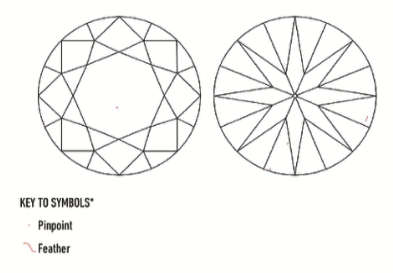
It is nearly impossible to see the tiny inclusions in a VVS2 diamond with your naked eye. And you definitely won’t see them when your VVS2 diamond is set in an engagement ring. You are more likely to see the dust and soap residue your diamond attracts as you wear it.
Is it worth it to pay the premium for a VVS2 diamond? We don’t think investing in details that don’t make a difference to your diamond’s beauty is worth compromising other factors like cut quality or carat weight. Buying a diamond that has a lower quality grade but still no eye-visible inclusions will leave more money in your budget to buy a larger, more beautifully cut diamond.
WHAT ROSI RECOMMENDS
Should you pay extra for VVS2 diamonds? ROSI doesn’t think the tiny differences in appearance between the top grades of the GIA clarity grading scale are worth the investment. ROSI recommends buying diamonds without inclusions that are visible to the naked eye. Generally that means diamonds with a clarity grade of VS2 and above. But because the visibility of inclusions in diamonds of each clarity grade varies by the size and cut of the diamond and the size and position of the inclusions, there is no simple rule that applies for all diamonds. ROSI automatically takes these factors into account when searching for a diamond with the best possible combination of quality and value.
How does ROSI know diamonds so well? We trained her with dozens of professional diamond buyers. We asked them which diamonds among thousands they would buy for themselves or their daughters. ROSI calculated how they balanced more than 30 individual quality factors and applies those lessons to sift through all the grading reports of all the diamonds available on the market to pick the best combination of quality and value. With ROSI, you’ll find that brilliant needle in the haystack every time.


